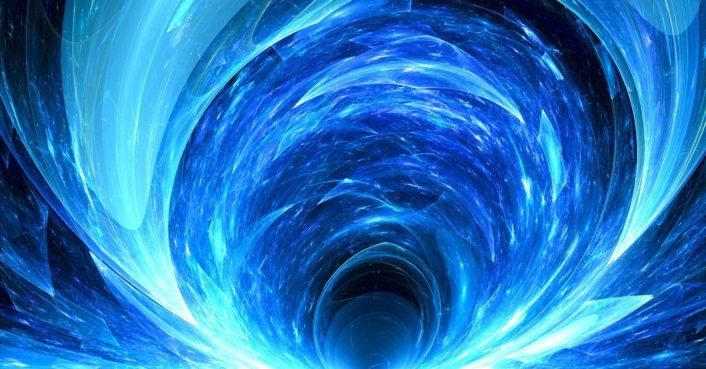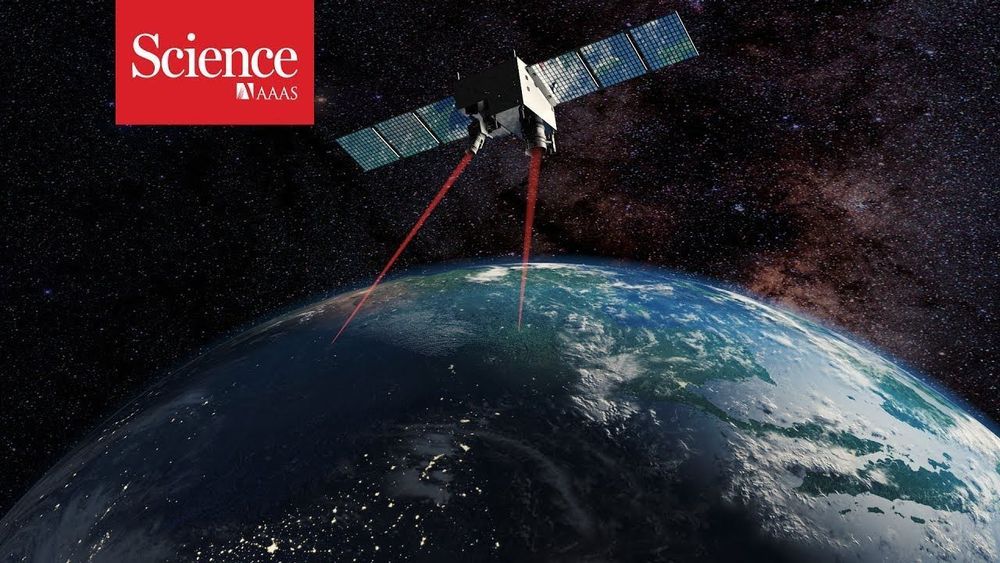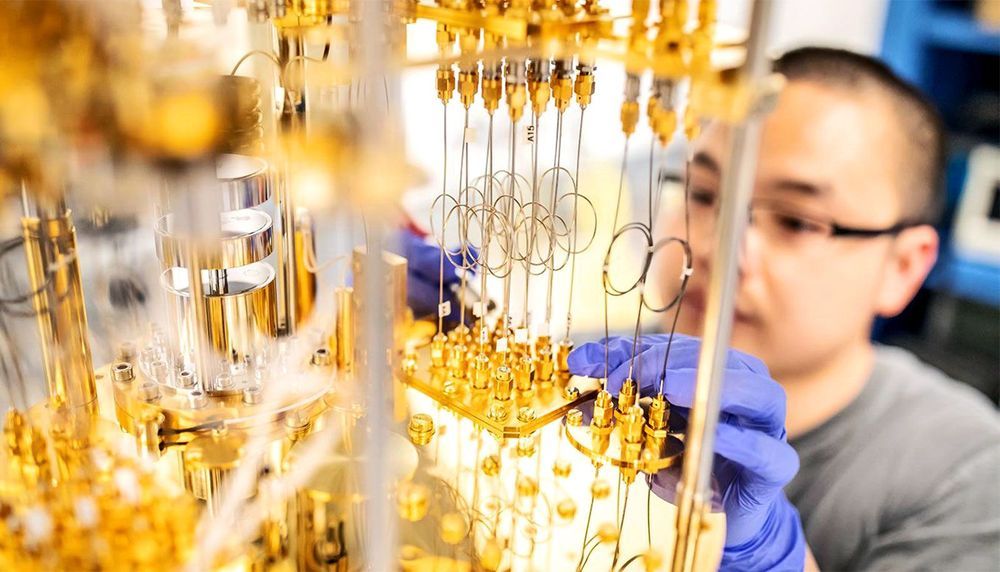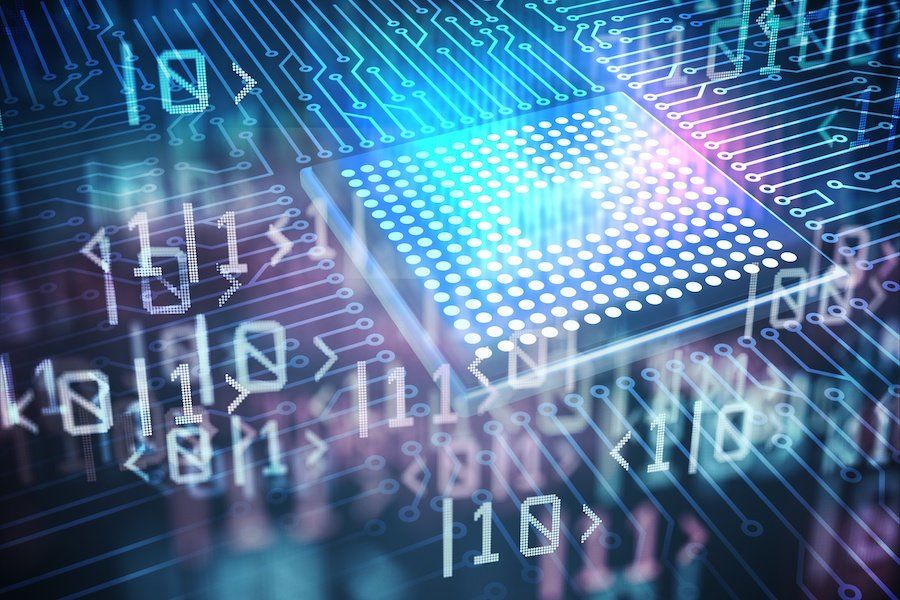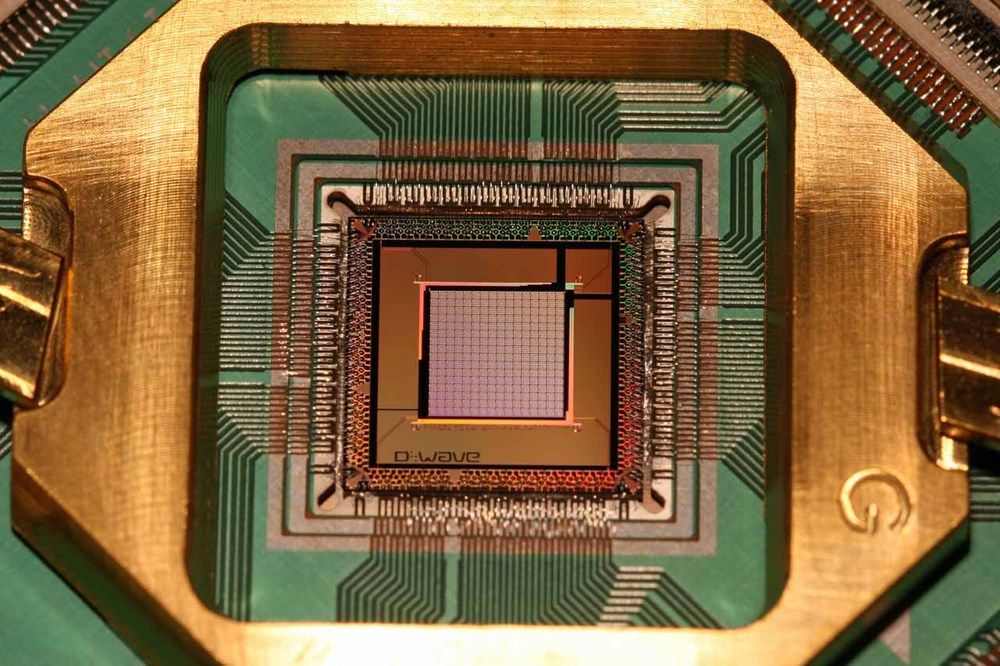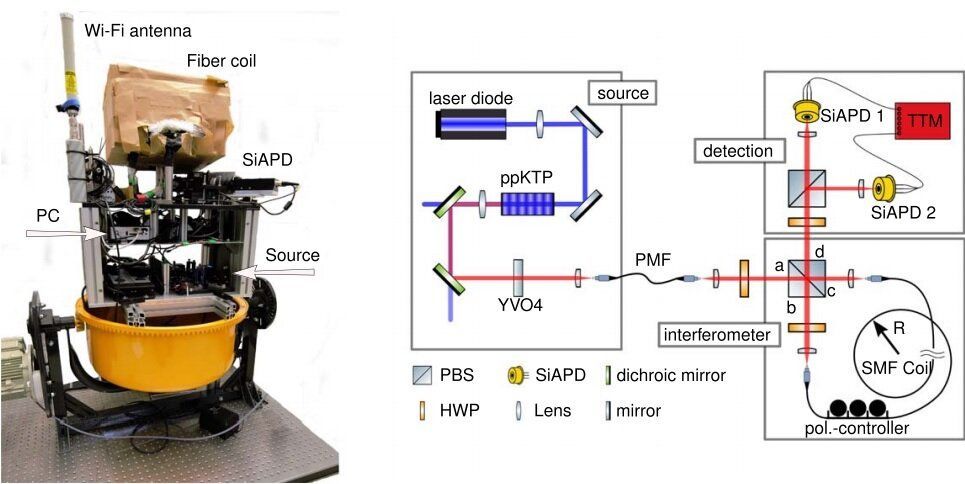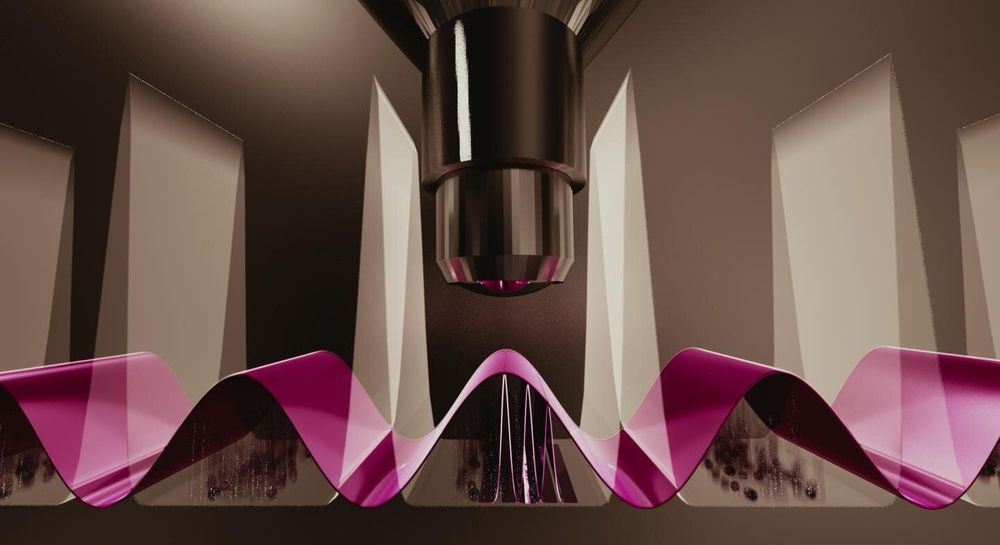Archive for the ‘quantum physics’ category: Page 630
May 17, 2019
Quantum Teleportation Is Sci-Fi Technology in Real Life
Posted by Quinn Sena in category: quantum physics
May 17, 2019
Quantum bit communication breaks distance record
Posted by Quinn Sena in category: quantum physics
Two new studies show quantum bits connecting over the longest distance ever and also via sound.
May 17, 2019
Quantum cloud computing with self-check
Posted by Genevieve Klien in categories: chemistry, computing, particle physics, quantum physics
With a quantum coprocessor in the cloud, physicists from Innsbruck, Austria, open the door to the simulation of previously unsolvable problems in chemistry, materials research or high-energy physics. The research groups led by Rainer Blatt and Peter Zoller report in the journal Nature how they simulated particle physics phenomena on 20 quantum bits and how the quantum simulator self-verified the result for the first time.
Many scientists are currently working on investigating how quantum advantage can be exploited on hardware already available today. Three years ago, physicists first simulated the spontaneous formation of a pair of elementary particles with a digital quantum computer at the University of Innsbruck. Due to the error rate, however, more complex simulations would require a large number of quantum bits that are not yet available in today’s quantum computers. The analog simulation of quantum systems in a quantum computer also has narrow limits. Using a new method, researchers around Christian Kokail, Christine Maier und Rick van Bijnen at the Institute of Quantum Optics and Quantum Information (IQOQI) of the Austrian Academy of Sciences have now surpassed these limits. They use a programmable ion trap quantum computer with 20 quantum bits as a quantum coprocessor, in which quantum mechanical calculations that reach the limits of classical computers are outsourced.
May 16, 2019
Atomically thin quantum light-emitting diodes
Posted by Quinn Sena in categories: computing, quantum physics
Atomically thin transition metal dichalcogenides hold promise as scalable single-photon sources. Here, the authors demonstrate all-electrical, single-photon generation in tungsten disulphide and diselenide, achieving charge injection into the layers, containing quantum emitters.
May 16, 2019
D-Wave Unveils Higher-Performance 2000Q Quantum Processor
Posted by Quinn Sena in category: quantum physics
May 16, 2019
Entangled-photon gyroscope overcomes classical limit
Posted by Quinn Sena in categories: quantum physics, transportation
Fiber optic gyroscopes, which measure the rotation and orientation of airplanes and other moving objects, are inherently limited in their precision when using ordinary classical light. In a new study, physicists have experimentally demonstrated for the first time that using entangled photons overcomes this classical limit, called the shot-noise limit, and achieves a level of precision that would not be possible with classical light.
The physicists, led by Matthias Fink and Rupert Ursin at the Austrian Academy of Sciences and the Vienna Center for Quantum Science and Technology, have published a paper on the entanglement-enhanced fiber-optic gyroscope in a recent issue of the New Journal of Physics.
“We have demonstrated that the generation of entangled photons has reached a level of technical maturity that enables us to perform measurements with sub-shot noise accuracy in harsh environments,” Fink told Phys.org.
Continue reading “Entangled-photon gyroscope overcomes classical limit” »
May 16, 2019
Holographic imaging of electromagnetic fields using electron-light quantum interference
Posted by Quinn Sena in categories: encryption, energy, holograms, quantum physics
In conventional holography a photographic film can record the interference pattern of monochromatic light scattered from the object to be imaged with a reference beam of un-scattered light. Scientists can then illuminate the developed image with a replica of the reference beam to create a virtual image of the original object. Holography was originally proposed by the physicist Dennis Gabor in 1948 to improve the resolution of an electron microscope, demonstrated using light optics. A hologram can be formed by capturing the phase and amplitude distribution of a signal by superimposing it with a known reference. The original concept was followed by holography with electrons, and after the invention of lasers optical holography became a popular technique for 3D imaging macroscopic objects, information encryption and microscopy imaging.
However, extending holograms to the ultrafast domain currently remains a challenge with electrons, although developing the technique would allow the highest possible combined spatiotemporal resolution for advanced imaging applications in condensed matter physics. In a recent study now published in Science Advances, Ivan Madan and an interdisciplinary research team in the departments of Ultrafast Microscopy and Electron Scattering, Physics, Science and Technology in Switzerland, the U.K. and Spain, detailed the development of a hologram using local electromagnetic fields. The scientists obtained the electromagnetic holograms with combined attosecond/nanometer resolution in an ultrafast transmission electron microscope (UEM).
In the new method, the scientists relied on electromagnetic fields to split an electron wave function in a quantum coherent superposition of different energy states. The technique deviated from the conventional method, where the signal of interest and reference spatially separated and recombined to reconstruct the amplitude and phase of a signal of interest to subsequently form a hologram. The principle can be extended to any kind of detection configuration involving a periodic signal capable of undergoing interference, including sound waves, X-rays or femtosecond pulse waveforms.
May 16, 2019
Researchers shed new light on atomic ‘wave function’
Posted by Genevieve Klien in categories: biotech/medical, quantum physics, space
Physicists have demonstrated a new way to obtain the essential details that describe an isolated quantum system, such as a gas of atoms, through direct observation. The new method gives information about the likelihood of finding atoms at specific locations in the system with unprecedented spatial resolution. With this technique, scientists can obtain details on a scale of tens of nanometers—smaller than the width of a virus.
Experiments performed at the Joint Quantum Institute (JQI), a research partnership between the National Institute of Standards and Technology (NIST) and the University of Maryland, use an optical lattice—a web of laser light that suspends thousands of individual atoms—to determine the probability that an atom might be at any given location. Because each individual atom in the lattice behaves like all the others, a measurement on the entire group of atoms reveals the likelihood of an individual atom to be in a particular point in space.
Published in the journal Physical Review X, the JQI technique (and a similar technique published simultaneously by a group at the University of Chicago) can yield the likelihood of the atoms’ locations at well below the wavelength of the light used to illuminate the atoms—50 times better than the limit of what optical microscopy can normally resolve.
Continue reading “Researchers shed new light on atomic ‘wave function’” »
May 16, 2019
For a Split Second, a Quantum Computer Made History Go Backward
Posted by Paul Battista in categories: computing, particle physics, quantum physics
Using a quantum computer, physicists successfully reversed time for an artificial atom. You can even try it at home.
